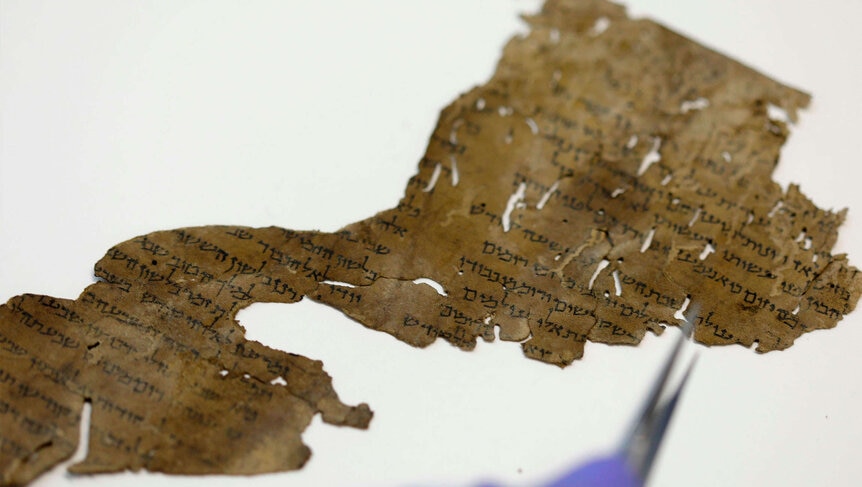Create a free profile to get unlimited access to exclusive videos, sweepstakes, and more!
DNA being used to reassemble long-broken fragments of the Dead Sea scrolls back together

What usually comes to mind when you think of DNA are things like gene editing, bringing back extinct species, or looking deeper into what makes us human — but now you can add 2,000-year-old scrolls to the list.
Imagine a thousand manuscripts that could possibly rewrite parts of the Bible. Abandoned in caves in Qumran and other parts of the Judean desert since antiquity, the Dead Sea Scrolls not only include several different versions of some books as well as accounts of everyday life in biblical times. The problem is that they disintegrated into some 25,000 fragments. An international team of scientists have now started to piece them together using the DNA from the animal skins they were written on — which is even more complicated a process than it sounds.
“We used the fact that most scrolls are made from animal skins to 'fingerprint' pieces based on DNA sequences,” said Professor Ohed Rechavi of Tel Aviv University, who recently published a study in Cell after seven years of research. “Genetic sorting of the scrolls illuminates their textual relationship and historical significance.”
Unreal precision is needed for this, not only because the scrolls are so ancient and fragile, but because connecting the wrong pieces could mean a totally different interpretation of any particular scroll. Not all of the animal skins even originated in Qumran. Some of them were obtained from antiquities dealers, not at the original sites where they were hidden away before the destruction of the Second Temple in 70 A.D. Plus, DNA has degraded since then. Add that to repeated handling by people since the scrolls were written, and it complicates things even further because of possible contamination by human hands.
“We hypothesized that if skins from diverse types of animals were used for the preparation of different scrolls, then species identification could allow primary sorting of related fragments,” Rechavi said.
The skins of the Dead Sea Scrolls came mostly from sheep, though some were goat and cow skins. Fragments made of cow skin were especially interesting to the team. With an arid climate not favorable to grass and water, the Judean desert was not exactly the best place to raise cattle, meaning they must have come from somewhere else. Piecing together the scrolls required sequencing DNA from the fragments and determining first which species, then which haplogroup, then which individual animals, each piece came from. Haplogroups share a common genetic ancestor. Species and haplogroups give themselves away much more easily than individuals (especially when not all of the genes are intact). As controls, they used both modern parchments and other leather objects, such as waterskins, that were unearthed at the same sites.
Genetic analysis of the fragments from the Book of Jeremiah revealed something that could rewrite both the Bible and history. Upon closer observation, the team realized that fragments from the Jeremiah scrolls had varying origins, and two of them were made of cowhide that been brought to the Qumran caves from another location. DNA sequencing can prove this. Sheep have five different haplogroups, and three of these are known to be local to the area where the scrolls were found. Most biblical books have been the same since antiquity, so this is a find that could mean there was a disparity between the interpretation of the text by different Jewish and proto-Christian sects.
“The genetic distinction between the Jeremiah fragments has important and broader historical implications. It is revealing that the genetic analyses disassociate fragments that reflect different versions of the book,” said Rechavi.
Another book that the team unearthed multiple copies of was Songs of the Sabbath Sacrifice (not to be confused with Song of Songs), a quasi-mystical text that never made into the Bible. Because 10 copies were found in the Dead Sea scrolls, it could be proof that this was a popular read several thousand years ago. A fragment from one of these books was found to have been written on skin from a different sheep haplogroup than those endemic to Qumran. That haplogroup was from Masada. Whether this book was only known to a particular sect or if it was known outside Qumran remains a mystery.



























